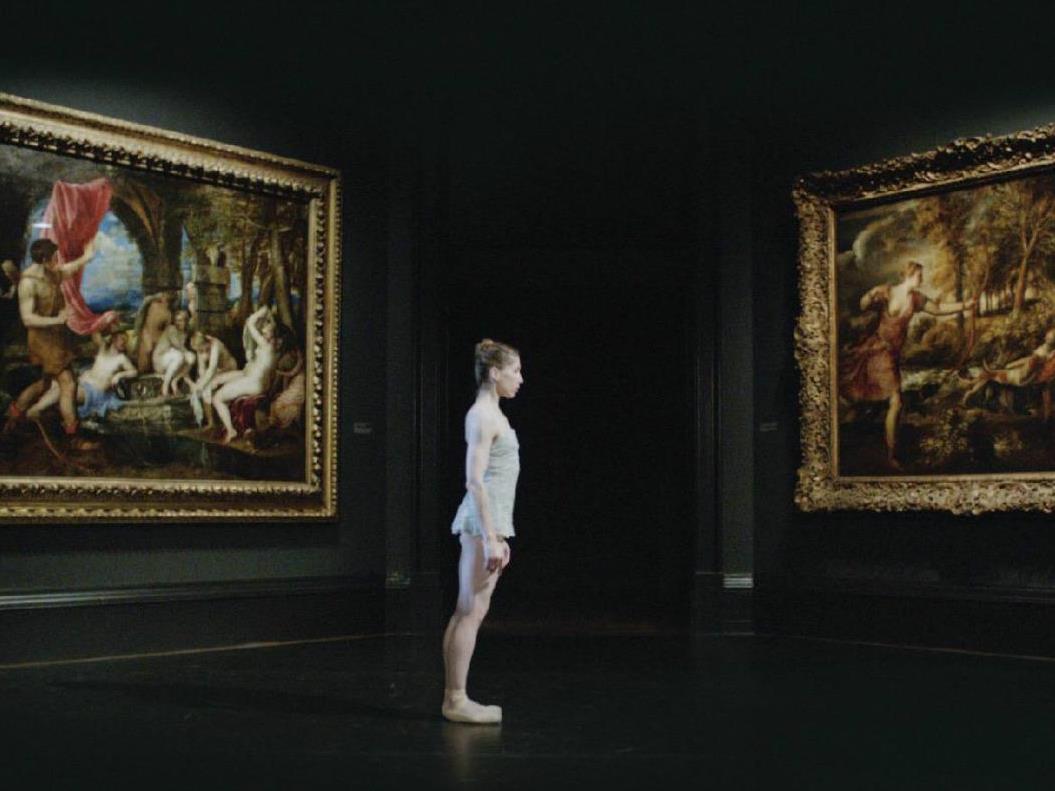This is a film about people looking at art. An elderly gentleman leans in for a closer look at a painting. A young student sits in front of a renaissance piece sketching in a pad. An art restoration employee stares through the magnified lens of his glasses as he adds tiny brush strokes to a deteriorating priceless work of art. However, the paintings also stare out at us the audience. Close-ups of various faces from art history are rhythmically interspersed with the aforementioned shots of patrons viewing works on display at The National Gallery in London. Frederick Wiseman’s documentary is about observation. It’s as if the paintings themselves are observing their observers.
National Gallery explores the day-to-day running of one of the largest art galleries in the world, The National Gallery in Trafalgar Square in London. Weisman’s film covers all departments of the institute; from the opening shot of a cleaner buffing the gallery floors through to high-powered and often heated board meetings with the directors, no stone is left unturned in this often fascinating yet ultimately overlong cinematic study.
This is not your typical ‘talking heads’ documentary. There are no on camera interviews, nor is there a rigid thematic structure. National Gallery unfolds at a steady pace, moving from department to department with an almost languid sense of time. Weisman’s camera is omnipresent observing each happening for a moment before moving on to something else. We witness employees leading tours, a life-drawing class at work and the frame-building studio amongst a plethora of other departments in the gallery.
Some are more engaging than others. The behind-the-scenes sections prove most interesting. A tense meeting regarding the proposed advertising of a charity organisation at the gallery causes a heated debate, with the marketing department butting heads with the stuffy traditional nature of the gallery’s head director. Later in the film we observe the painstaking process of finding the right lighting design to showcase a new acquisition to the gallery, which turns out to be an art in itself. The sections of the film that focus on art history classes and the like are less engaging. The last twenty minutes or so of National Gallery becomes bogged down in endless lectures about artist intentions and the compositions of various works. It’s not that this aspect shouldn’t be explored, it’s just that Weisman keeps returning to these moments when we’ve seen it all before earlier in the documentary so it starts to wear a bit thin. The film’s conclusion, a dance performance in one of the gallery’s rooms, is affective.
Let’s not forget the reason we’re here, the art. National Gallery offers a fantastic way to get up close and personal with some of the greatest works of art from the 13th century through to the 1900s. Glorious shots of famous paintings, from da Vinci’s The Virgin of the Rocks to Rubens’ Samson and Delilah, are truly stunning. The stories behind these pieces, their significance and their place within the National Gallery are explored at length. Wiseman’s film shows various scholars, students and art historians discussing these paintings and their varied responses and observations highlight the contentious nature of interpreting works of art.
As a study of the inner workings of The National Gallery Wiseman’s documentary is measured, fascinating, exhaustive and eventually exhausting. It basically just runs out of steam. As an opportunity to observe some of the most incredible works of art ever seen it’s priceless.
Rating: 3 ½ out of 5 stars
National Gallery
Director: Frederick Wiseman
United Kingdom, 2014, 174 min
Melbourne International Film Festival
www.miff.com.au
31 July – 17 August
Actors:
Director:
Format:
Country:
Release:





